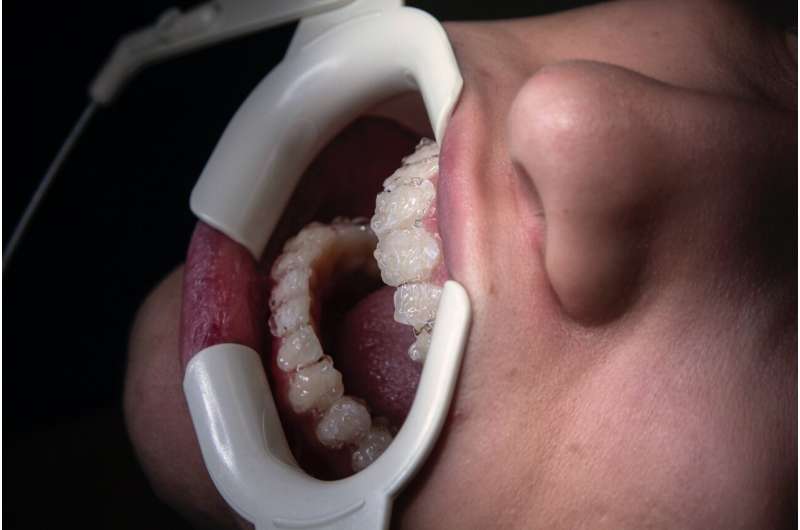
Credit: Unsplash/CC0 Public Domain
Want to avoid a root canal? In the future, you may be able to choose tissue regeneration. ADA Forsyth scientists are testing a new technology to more effectively treat endodontic disease (diseases of the soft tissue or pulp in your teeth).
The study, “RvE1 promotes regeneration of Axin2+ cells and reduces bacterial invasion”, which appeared on The Journal of Dental Research, demonstrates regenerative properties of resolvins, specifically Resolvin E1 (RvE1), when applied to dental pulp. Resolvins are part of a larger class of Specialized Proresolving Mediators (SPMs). This class of molecule is produced naturally by the body and is highly effective in controlling excessive inflammation associated with disease.
“Pulpitis (inflammation of the dental pulp) is a very common oral health disease that can become a serious health condition if not treated properly,” said Dr. Thomas Van Dyke, Vice President in the Center for Clinical and Translational Research at ADA Forsyth and a senior scientist leading the study. “Root canal treatment (RCT) is effective but has some problems as you remove significant parts of the dentin and the tooth dries out resulting in a greater risk of fracture down the road. Our aim is to find a method to regenerate the pulp, instead of filling it the root canal with inert material’.
Inflammation of this tissue is usually caused by damage to the tooth through trauma, cavities or cracks, and the resulting infection can quickly kill the pulp and cause secondary problems if left untreated.
The study applied RvE1 to different levels of infected and damaged pulp to investigate its regenerative and anti-inflammatory abilities. There were two important findings. First, they showed that RvE1 is very effective in promoting pulp regeneration when used in direct pulp capping of vital or living pulp (reproducing conditions of reversible pulpitis). They were also able to identify the specific mechanism that supports tissue regeneration.
Second, the scientists found that placing RvE1 into exposed and severely infected and necrotic pulp did not facilitate regeneration. However, this treatment effectively slowed the rate of infection and addressed the inflammation, preventing the periapical lesions (abscesses) that commonly occur with this type of infection. Previous publications have shown that if the infected root canal is cleaned before RvE1 treatment, pulp regeneration does occur.
While this study focused on this technology for the treatment of endodontic disease, the potential therapeutic impact is far-reaching. Dr Van Dyke explained, “because the application of RvE1 to dental pulp promotes the formation of the type of stem cells that can differentiate into dentin (tooth), bone, cartilage or fat, this technology has enormous potential for the field of regenerative medicine beyond tissues in the teeth. It could be used to grow bones in other parts of the body, for example.”
Study authors include Yu-Chiao Wu, Ning Yu, Carla Alvarez Rivas, Nika Mehrnia and Alpdogan Kantarci.
More information:
YC. Wu et al, RvE1 promotes regeneration of Axin2+ cells and reduces bacterial invasion, Journal of Dental Research (2023). DOI: 10.1177/00220345231197156
Reference: Scientists work to bring tissue regeneration to replace root canal therapy (2023, December 1) retrieved December 18, 2023 from
This document is subject to copyright. Except for any fair dealing for purposes of private study or research, no part may be reproduced without written permission. Content is provided for informational purposes only.

